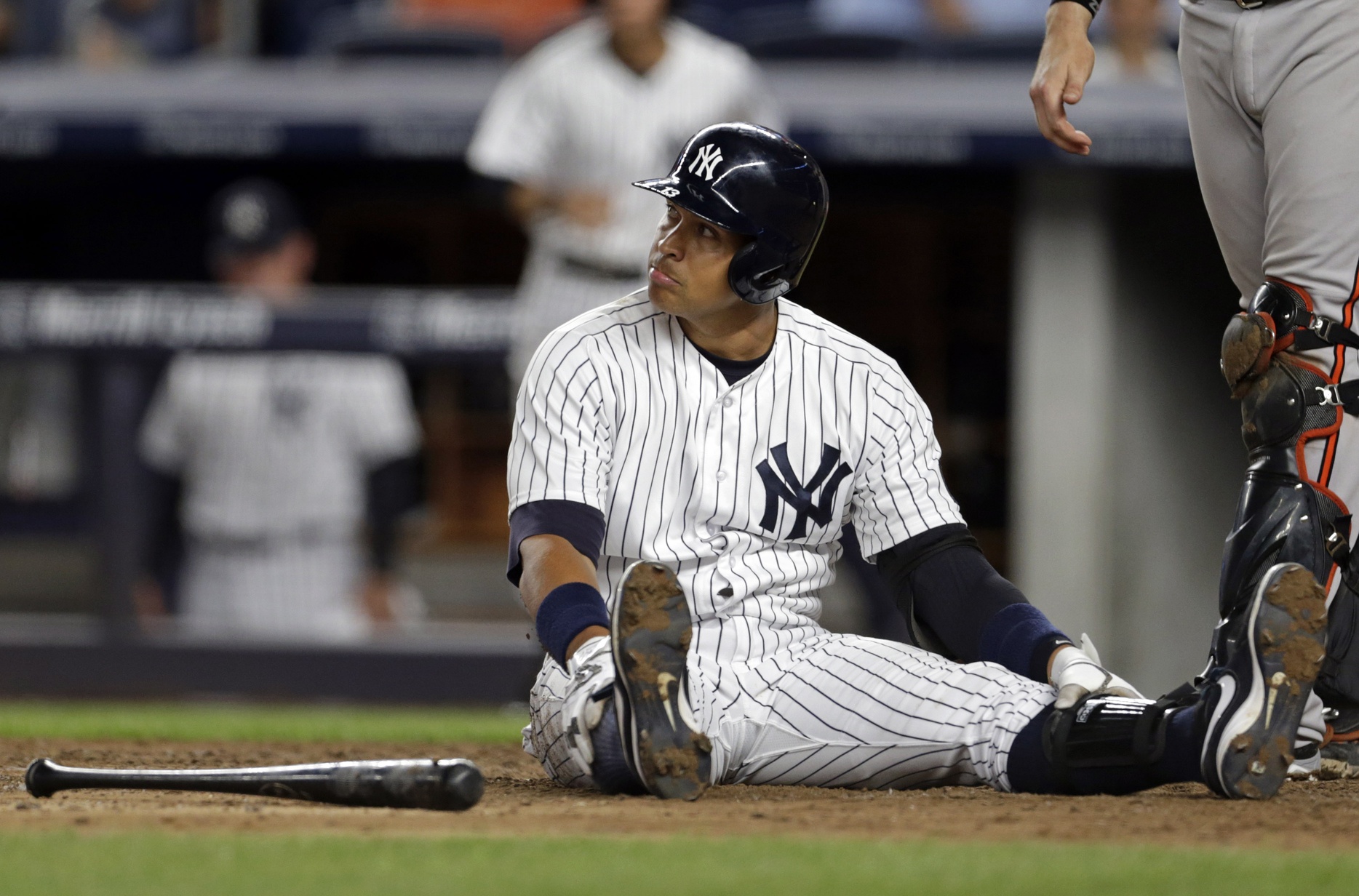When a superstar entering his prime years signs a long-term contract, there’s the unspoken understanding that the end won’t be pretty. Beyond the glamorous picture painted by gaudy numbers early in the contract is the acceptance that the final years will be filled with regret.
We all knew this when Albert Pujols signed his $240 million deal through his age-41 season, when Prince Fielder was locked in for $214 million until he was 37, and, of course, when Alex Rodriguez was extended until the age of 42 for $275 million. It was acknowledged that these studs would eventually become overpaid veterans, but in Rodriguez’s case (and with others), few realized how ugly it would get.
These former offensive stalwarts are supposed to become payroll problems later on, sure, but they are also expected to remain (somewhat) productive members of the team. Well, that’s the hope, at least. Rodriguez has not only saddled the Yankees with a catastrophic contract, but he’s also become a black hole on the roster.
Although there’s hope that Rodriguez will turn it around—based on track record and the first half of 2015—in truth, the 40-year-old looks all but done. It’s impossible to say for sure what ‘done’ means, but a .213/.264/.376 line from a designated hitter is pretty close to a worst case scenario. Rodriguez, who has been worth -0.6 WARP through 220 plate appearances, has been an unmitigated disaster.
Not only is the power disappearing, strikeout number increasing and plate discipline evaporating, there’s little sign of a light at the end of the tunnel. Rodriguez can’t help but swing at balls (at a rate higher than ever before in his storied career), and is making very little hard contact. He’s pounding pitches into the ground—never a good thing for a power hitter—while also pulling balls without success.
Some may say Rodriguez will bounce back because he was a force to be reckoned with at the plate in 2015, but that’s only half-true. Rodriguez was good for some of last season, but he also hit .216/.324/.448 in the second half. It’s now been a full season since Rodriguez was a productive designated hitter, and the Yankees have another season and a half to go with him. There’s almost no chance things improve at this point, but the veteran certainly could get even worse in his age-41 season.
Perhaps what is most telling is the Yankees would be better off with 2014’s version of Alex Rodriguez than 2016’s version. If you don’t recall, Rodriguez spent 2014 in the gym, not on the field, because he was suspended for all 162 games for his involvement in the Biogenesis scandal.
Admitting the Yankees would be better off without one of the greatest hitters to ever play the game is hard to do, but it’s necessary. It’s a notion manager Joe Girardi is slowly embracing, moving Rodriguez to the wrong side of a platoon, to primarily face left handed pitchers and avoiding righties, and dropping him in the order.
The team is on their way to burying Rodriguez at the end of the bench, minimizing his negative impact on games. This is a seemingly heavy-handed and lose-lose solution to the problem: not only would the team be playing with essentially 24 players on the 25-man roster, but this disadvantage would come at the steep cost of $21 million. That said, it’s better than playing Rodriguez—his negative WARP means it’s more than his contract that is costing the Yankees money. Maybe another utility infielder, fifth outfielder, or extra man in the bullpen isn’t going to save the Yankees’ season, but they would certainly be an upgrade over Rodriguez’s current place on the roster.
This is a long way of saying the current setup isn’t working—something has to give. It won’t be Rodriguez (he’s not retiring, nor is he taking a pay cut to stay on the team), but there’s not a whole lot of wiggle room for the Yankees. Trading him won’t be an option, so the only realistic route for the Yankees to take (aside from what is happening now) is to buy Rodriguez’s contract out.
A contract buyout lacks much precedent (the last was Jason Bay’s $21 million by the Mets in 2012) and is universally viewed as a negative thing (fans still ‘celebrate’ Bobby Bonilla Day on a yearly basis) but looks to be necessary. Nobody wants to stoop down to buying a player out, because it admits defeat and turns the money into a sunk cost, but the Yankees are without other options. It’s the last resort, sure, but the Yankees are without other options.
Photo: Adam Hunger/USA Today Sports

Can they not send him to the minors?